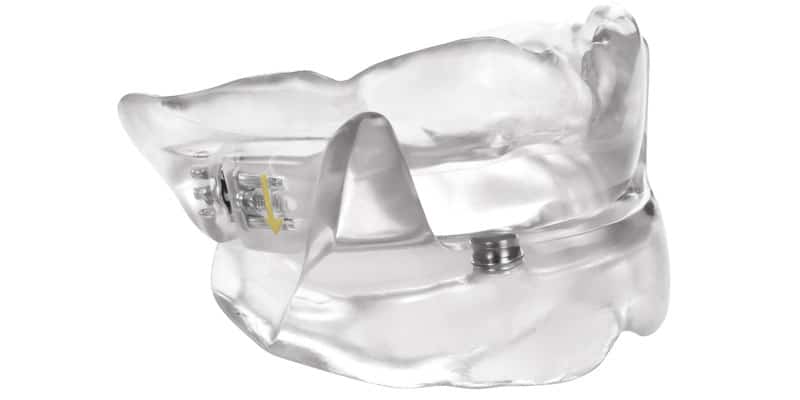Dentures and OSA can present challenges — but DynaFlex has options for edentulous patients and implant patients for dental sleep solutions.

When you run into your first edentulous patient that needs to be treated for sleep apnea it can seem overwhelming. Don’t fret, there are options for a successful outcome for these patients!
Typically, you have 3 options when it comes to treating an edentulous patient with an oral device for sleep apnea.
- Making the device over the dentures and treating it like a normal case
- Making a tongue retaining device (TRD)
- Making the device over the ridges with implant support on the mandible
Let’s dig into which option would work best for your patient. To determine the best option for your edentulous patient you need to have a thorough exam and review in your consultation. It’s always best to have some “show and tell” when reviewing the options. This allows the patient to fully comprehend what exactly each option would look like. During the consult the most important question to ask is, “do you wear your dentures at night?”. If the answer is yes, then you could keep things simple and make a well-fitting device over their current dentures. For this option, you want to make sure the current denture is in good condition and fits snug over the ridges, especially on the mandible. This will be crucial when needing to move the sleep device further forward over time.
If the patient does not wear their dentures at night, we need to explore the other two options – Implant supported device, or a tongue retaining device. For the patients with no implant support and are sleeping without their dentures, the immediate option would be a tongue retaining device. A tongue retaining device has proven to have good results in treating sleep apnea; however, the compliance rate of TRDs is very low. I strongly encourage you to at least have a picture to show the patient how the device works before you go down this treatment path. Their bed partner may prefer the snoring over a lollipop tongue sticking out at them all night. Try to talk your patient into getting implants on the lower for a more comfortable and successful treatment outcome.
“Treating my edentulous patients with an oral sleep device used to be a challenge and working with the DynaFlex team has eliminated my frustration and worries. The DynaFlex team assists me to ensure a successful treatment outcome even on the most difficult cases.”
– Thomas M. Gotsis, DDS
The third and final option, is making a sleep device over implants. This is the best option for your edentulous patients; it guarantees maximum space for the tongue, and secure anchorage for the sleep device. At minimum, the patient will need 4 mini-implants or two regular implants on the mandible to secure the sleep device. You’ll need to send wax rims, or a duplicated denture for mounting at the lab. If you’re using a first-class lab, like DynaFlex, you can send the female locator attachments with the case and we will imbed them into the sleep device for you, or if you prefer you can pick them up chairside.
Don’t be fearful of the unknown; where there is a will there is a way! DynaFlex is your trusted partner in dental sleep medicine; we are here to help. Give us a call today so your sleep patients can start achieving the rest they deserve.
Whether your patient has dentures and OSA or any other type of dentition, there is no one-size-fits-all solution. Read this article by Dr. Rob Veis on sleep therapies and patients’ “individual landscapes.” https://dentalsleeppractice.com/2641/



